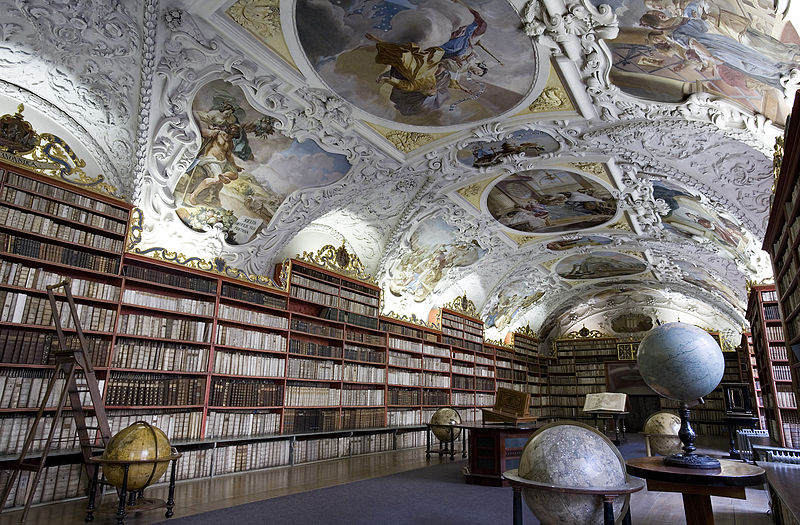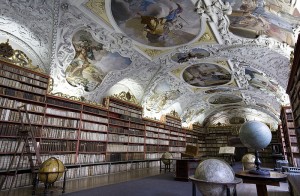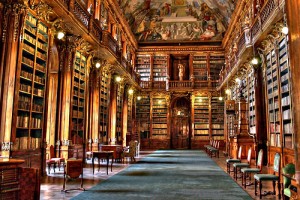
Amazing libraries around the world – The Strahov Monastery Libraries, Strahov Monastery, Prague, Czech Republic
Amazing libraries around the world – The Strahov Monastery Libraries, Strahov Monastery, Prague, Czech Republic
Founded in 1149, the Strahov monastery has two magnificent thematic libraries, the Theological Hall and the Philosophical Hall
The Theological Library with stucco decoration and paintings from 1720s. In 1670 Jeroným Hirnheim, a philosopher and theologist became the abbot of Strahov. His greatest work, which has survived to the present days, was the building of the new library, the present Theological Hall completed in 1679. During the 17th and the early 18th century other abbots continued in the reconstruction of the monastery. They also cared for the church, which was repaired and decorated several times during the given period. The monastery experienced other great building activity namely after the assault of French and Bavarian troops in 1742, when it was bombarded. After this destruction of the monastery the abbot organized building works again in the course of which the church was rebuilt along with the monastery area.
The Philosophical’s room, built for the books coming from Louka’s convent, closed in 1782.
In 1779 Václav Mayer occupied the abbot’s throne and was the last to carry out great building activities. His most outstanding work was the building of the new library, now in Classical style. Today it is called the Philosophical Hall. This work brought the extensive building activity at Strahov Monastery to an end and the following generations of abbots devoted their attention merely to minor architectural repairs, all under the influence of contemporary fashion, and to maintenance of the area as a whole.
The monastery survived in this way until 1950, when it was taken over by the communist regime, the religious being interned and placed incivil employment, very few of them being able to work in the clerical administration as priests of the diocese. The monastery was subjected to thorough archeological research and transformed into the Museum of National Literature. In the course of the said archeological research the long since forgotten Romanesque form of the monastery was revealed and reconstructed in a sensitive way.

